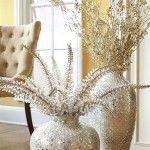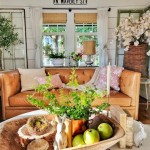```html
Home Decor Photography: Capturing the Essence of Interior Spaces
Home decor photography is a specialized genre of photography focused on visually representing the aesthetics and functionality of interior spaces. It encompasses a wide spectrum, from capturing entire rooms in a single frame to highlighting specific details like textures, furniture, and decorative elements. The purpose of home decor photography extends beyond mere documentation; it aims to evoke emotion, inspire design ideas, and ultimately, influence purchasing decisions or client engagement.
This type of photography plays a critical role in various industries. Real estate agents utilize it to showcase properties and attract potential buyers. Interior designers rely on it to build portfolios, present their work to clients, and market their services. Furniture retailers use it to visually communicate the appeal of their products within a curated environment. Even bloggers and online magazines dealing with lifestyle and design frequently incorporate home decor photography to enhance their content and attract readership.
The success of home decor photography hinges on a meticulous understanding of lighting, composition, and styling. Unlike other photographic genres where spontaneity might be valued, home decor photography often requires careful planning and execution. This involves staging the scene, controlling the light, selecting the appropriate equipment, and employing post-processing techniques to achieve a polished and professional final image.
Understanding Lighting in Home Decor Photography
Lighting is arguably the most crucial element in home decor photography. It significantly impacts the mood, depth, and overall appeal of the image. The goal is to create a lighting scheme that accurately represents the space while simultaneously enhancing its aesthetic qualities. Different approaches to lighting can be employed depending on the desired outcome and the existing light conditions within the space.
Natural light is generally preferred, as it renders colors accurately and creates a soft, inviting ambiance. However, relying solely on natural light can be challenging due to its variability depending on the time of day, weather conditions, and the orientation of the room. Photographers often need to supplement natural light with artificial sources to achieve a consistent and balanced illumination.
When using artificial light, careful consideration must be given to the color temperature of the light source. Mixing different color temperatures can result in unwanted color casts and an unnatural appearance. It is generally advisable to stick to a consistent color temperature, typically daylight-balanced (around 5500K), to ensure accurate color rendition. Softening the artificial light with diffusers or bounce cards can also help to create a more pleasing and natural-looking illumination.
Furthermore, photographers should be mindful of shadows. Harsh shadows can obscure details and create an undesirable contrast. The goal is to create soft, even shadows that add depth and dimension to the image without being overly distracting. This can be achieved by using multiple light sources and carefully positioning them to minimize harsh shadows.
The ambient light within a space must also be considered. This refers to the existing light present in the room, such as light fixtures, lamps, and reflections from surfaces. Understanding how the ambient light interacts with the other light sources is crucial for achieving a harmonious and well-balanced lighting scheme. In some cases, adjusting the ambient light by dimming or turning off specific fixtures can improve the overall look of the photograph.
Mastering Composition and Styling Techniques
Composition refers to the arrangement of elements within the frame. A well-composed photograph guides the viewer's eye through the image and highlights the most important features of the space. Several compositional techniques can be employed to create visually appealing and engaging home decor photographs.
The rule of thirds is a fundamental principle of composition that involves dividing the frame into nine equal parts using two horizontal and two vertical lines. Placing key elements along these lines or at their intersections can create a more dynamic and balanced composition. This technique can be used to emphasize specific furniture pieces, architectural details, or decorative elements.
Leading lines are another powerful compositional tool that can guide the viewer's eye through the image. These lines can be created by architectural features such as hallways, stairs, or furniture arrangements. Leading lines can create a sense of depth and draw the viewer into the scene.
Symmetry and patterns can also be used to create visually appealing compositions. Symmetrical arrangements can create a sense of order and balance, while patterns can add visual interest and rhythm to the image. However, it is important to use symmetry and patterns judiciously, as overuse can lead to a monotonous or predictable composition.
Styling plays a crucial role in enhancing the aesthetic appeal of the space and creating a cohesive and inviting atmosphere. Before photographing a room, it is important to declutter and remove any distracting elements. Adding carefully selected accessories, such as plants, books, and decorative objects, can help to create a sense of warmth and personality.
Consider the target audience when styling the space. A minimalist aesthetic might be appropriate for a modern apartment, while a more traditional style might be better suited for a country home. The goal is to create a space that is both visually appealing and relevant to the intended audience.
Pay attention to details such as the placement of pillows, the arrangement of books on a shelf, and the lighting of candles. These small details can make a significant difference in the overall look and feel of the photograph.
Essential Equipment and Post-Processing Workflow
The choice of equipment significantly impacts the quality and versatility of home decor photography. While professional-grade equipment is not always necessary, investing in certain key items can greatly enhance the results.
A DSLR or mirrorless camera with a wide-angle lens is generally considered essential. A wide-angle lens allows the photographer to capture more of the space in a single frame, which is particularly important in smaller rooms. A lens with a focal length of 16-35mm is a common choice for home decor photography.
A sturdy tripod is also crucial for ensuring sharp and stable images, especially when shooting in low-light conditions or using slow shutter speeds. A tripod allows the photographer to carefully compose the shot and avoid camera shake.
External flashes or strobes can be used to supplement natural light and create a more balanced lighting scheme. Multiple flashes can be used to illuminate different parts of the room and minimize harsh shadows.
Post-processing is an integral part of the home decor photography workflow. Image editing software such as Adobe Lightroom or Photoshop can be used to adjust the exposure, contrast, color balance, and sharpness of the images.
Correcting distortions caused by wide-angle lenses is a common task in post-processing. Lens correction tools can be used to straighten lines and remove any unwanted perspective distortions.
Removing blemishes and distractions is also an important part of the post-processing workflow. This can include removing dust spots, cleaning up imperfections, and eliminating any unwanted objects from the scene.
Finally, sharpening the image can help to enhance details and create a more visually appealing final product. However, it is important to avoid over-sharpening, which can result in unwanted artifacts and a harsh appearance. A subtle amount of sharpening is usually sufficient to enhance the details without overdoing it.
```
Home Decor Photos The Best Free Stock Hd Images

Interior Photography Site Preparation 3 Essential Points For Consideration Zac And

Pink Sand Home Decor Print Photography Wall

Home Styling Pictures Free Images On Unsplash

Green Living Room Ideas Modern Art Home Decor Picture Wall Nature Photography Aesthetic Pictures

Toronto Photography Studio Al Mararamiro
Interior Photography Lighting Everything You Need To Know

Grinding Stone Print Nature Photography Rustic Home Decor

A Guide To Property Photography Interior Exterior

Picture Perfect Decorate With Black And White Photographs For Exquisite Interiors Decoist
Related Posts







